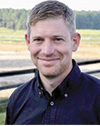Likewise, if you have wanted to enhance your calf profits, the calendar is your main tool to make sure protocols and management tasks are carried out on time.
For example, if you would like your fall-calving herd to stop calving around Dec. 31, the bulls need to be removed March 23. Likewise, producers wanting to maintain a Jan. 10 to March 30 calving window can make sure bulls are marked on the calendar to go in on April 1 and pulled on June 20.
When using the calendar in such a way, we must remember it should be laid out to strategically maintain or adjust management practices while not forgetting about smaller groups in the herd, such as separated heifers. Since heifers need an additional three weeks to recover from their first parturition, using the earlier example, calving ease bulls need to be on the calendar for March 1 turnout.
This will help to ensure heifers fit the Jan. 10 – March 30 calving season. The following year, those heifers should be set to join in with the same breeding season as the rest of the herd.
Also, changing or tightening calving seasons oftentimes takes multi-year planning to avoid large calf crop reductions and profit. Someone who is year-round calving now can mark their calendars for the next three years for bull turnout and removal. Basing decisions around the intended calving season and the bulk of current calvings, the breeding season is shortened each year to improve overall management while increasing marketing groups and average weights. More detailed resources for this type of planning can oftentimes be found by contacting your extension resources.
Setting up a calendar with today’s technology does allow us to set annual repeats for certain management practices while also setting up advanced reminders. Digital calendars such as iCalendar and Google Calendar allow for instant sharing with family and employees. Online herd recordkeeping platforms often have built-in calendars. If we could only plan for the weather. ![]()

-
Jason Duggin
- Beef Extension Specialist
- University of Georgia
- Email Jason Duggin








